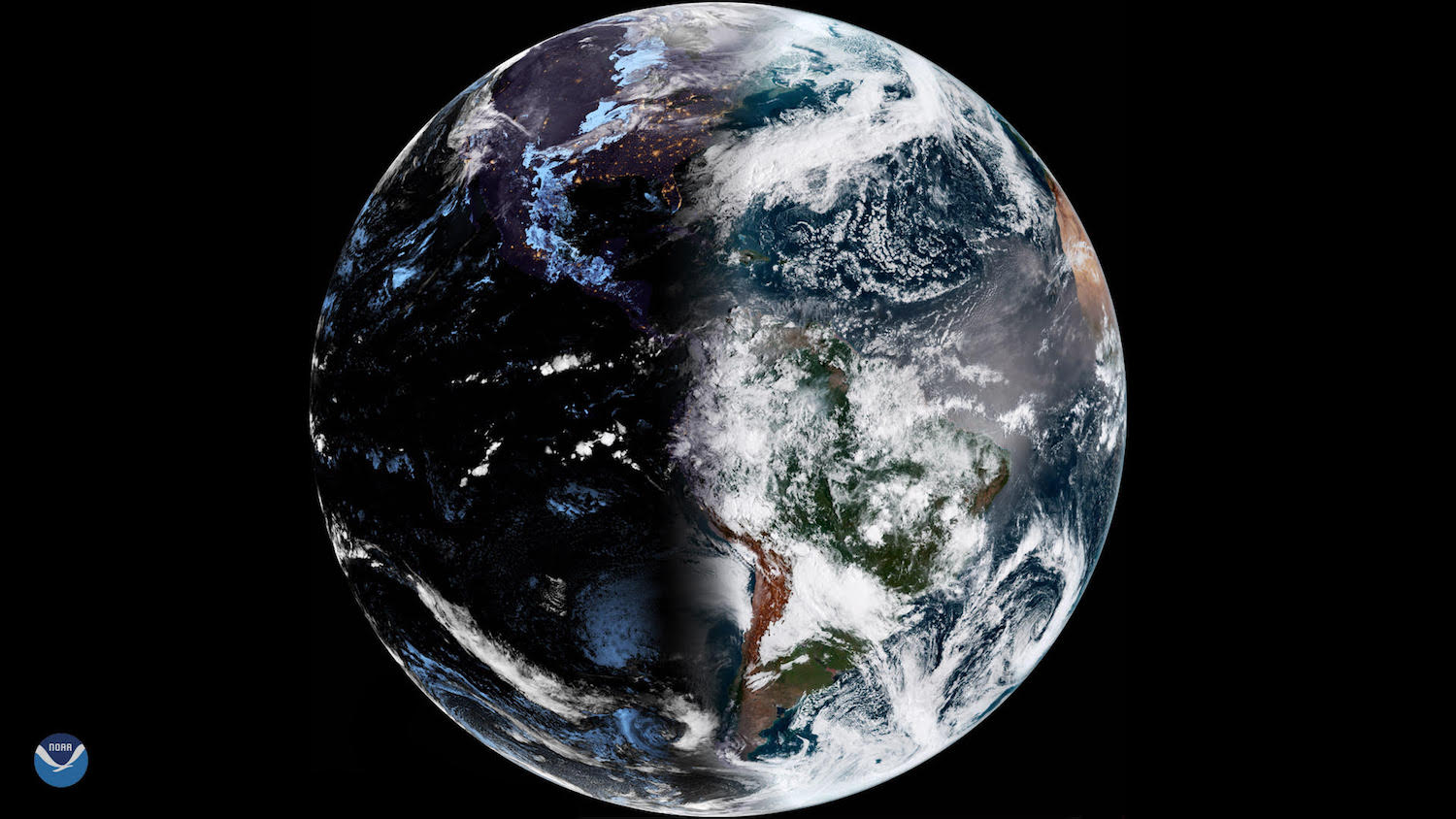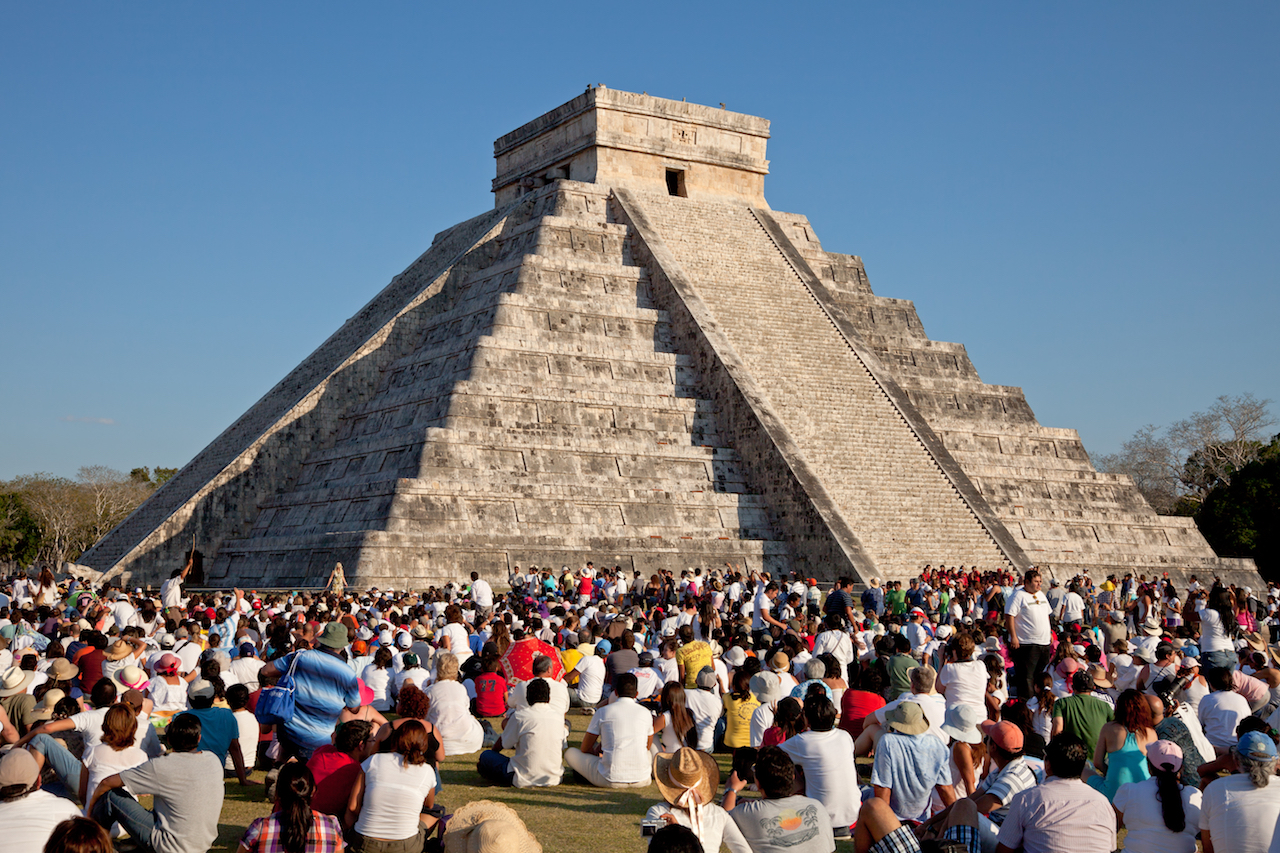What is an equinox?
Twice a year, day and night are almost the same length.

Twice a year, day and night are about the same length in both the Southern and Northern Hemispheres. This phenomenon is called an equinox, which comes from the Latin words "aequus" (equal) and "nox" (night).
What causes an equinox?
The Earth orbits the sun, at a tilt of about 23.5 degrees. This means that different parts of our planet receive more or less of the sun's radiation at various times of the year, depending on our planet's position in its orbit.
For all countries around the globe, the sun rises in the East and sets in the West. However, the sun also appears to move north for half of the year and south for the other half, depending on where you are. Around July, the Northern Hemisphere experiences longer periods of daylight while the Southern Hemisphere sees shorter periods of daylight. And, around December, the opposite is true, with more daylight hours in the Southern Hemisphere and fewer in the Northern Hemisphere.
But twice a year — in March and September — our planet's tilt aligns with its orbit around the sun, and Earth does not appear to tilt with respect to the sun, according to the National Oceanic and Atmospheric Association.
At this time of year, the sun sits directly above the equator and both hemispheres get the same hours of daylight and night. At these times, the line that divides night and day, called the terminator, "grey line" or "twilight zone," bisects the Earth and runs through the north and south poles.
Related: How do flat-Earthers explain the equinox? We investigated.
However, day and night are still not exactly equal during an equinox, according to EarthSky, although it is very close.
During an equinox, Earth gets a few more minutes of light than darkness. This is because sunrise occurs when the tip of the sun edges over the horizon, and sunset is defined as the moment when the other edge of the sun disappears under the skyline. And because the sun is a disk rather than a point source of light, Earth sees just a few more minutes of extra light (rather than darkness) during an equinox. Also, the atmosphere refracts the sun's light and it continues to travel to "nighttime" Earth for a short period, even after the sun has dipped below the horizon.
"On the equinox and for several days before and after the equinox, the length of day will range from about 12 hours and 6 and one-half minutes at the equator, to 12 hours and 8 minutes at 30 degrees latitude, to 12 hours and 16 minutes at 60 degrees latitude," according to the U.S. National Weather Service.
Equilux ("equal light"), on the other hand, is the term for when day and night are exactly equal. And, because of how sunrise and sunset are defined, the equilix occurs a few days before the spring equinox and a few days after the autumn equinox, according to the U.K.'s Met Office.
When do the equinoxes happen?
Equinoxes don't necessarily occur on the same day each year, rather they happen around or on March 20 and Sept. 23.
These shifting dates are because an Earth year is not exactly 365 days: There is an extra quarter of a day (6 hours) that accumulates each year, causing the date of the equinox to shift. The planet's orientation towards the sun is also constantly shifting, tweaking the timing of the equinox.
Related: Why the autumnal equinox doesn't fall on the same day every year
The equinoxes mark the astronomical beginning of spring or autumn, depending on the hemisphere. However, the meteorological beginning of these seasons is March 1 and Sept. 1.
In the Northern Hemisphere, the March equinox heralds the beginning of spring and is referred to as the spring or vernal equinox (vernal comes from the Latin term "ver" for spring). At the same time, the Southern Hemisphere shifts into autumn. The converse is true in September when the northern half of the planet descends into the colder months of autumn and the southern half enters spring.
Earth is not alone in experiencing equinoxes. In fact, every planet in the solar system has them when the planet's orbit and tilt with respect to the sun result in both hemispheres receiving roughly equal amounts of light.

Who discovered the equinoxes?
People have been tracking the sun's movements for thousands of years, often incorporating equinoxes into cultural and religious traditions. For many ancient civilizations, these solar changes not only dictated the beginning of seasons but also when to plant and harvest crops. In Japan, both equinoxes are public holidays traditionally recognized as a day to remember and worship ancestors and loved ones that have died, according to the Coto Japanese Academy.
Related: Milky Way glimmers over gorgeous landscape during the spring equinox (photo)
There are also many ancient monuments that mark the equinoxes. For example, during an equinox at the Hindu temple complex Angkor Wat in Cambodia, the sun rises directly above its central temple. The complex, built between A.D. 1113 and 1150, is the largest religious monument in the world. In 1976, scientists published an account of the astronomical link between its architecture and celestial events in the journal Science.
Additionally, the Mayan temple at Chichén Itzá in Mexico, known as the Temple of Kukulcan (or El Castillo), is dedicated to a serpent god. During the equinox, a trick of the light makes it appear as though a serpent is descending down the temple's side, traveling into the underworld. According to research published in the Journal of Archaeological Science in 2018, The temple was built between the 8th and 12th centuries.
Additional resources
Learn how to build a sun-Earth model of equinoxes and solstices at home. Find out when the next equinox will occur where you live with these resources from Time and Date. Take a look at five ancient sites that align with the spring equinox.
Bibliography
- Juan Antonio Belmonte - What Equinox?
- NASA/JPL - Embracing the equinox
- Jeen Meeus, Denis Savoie - The history of the tropical year
Join our Space Forums to keep talking space on the latest missions, night sky and more! And if you have a news tip, correction or comment, let us know at: community@space.com.
Get the Space.com Newsletter
Breaking space news, the latest updates on rocket launches, skywatching events and more!
Sarah is a former contributor for Space.com and Live Science in the areas of human spaceflight, science, fertility, and search for life. She's the author of "Searching African Skies: The Square Kilometre Array", "Innovation: Shaping South Africa through Science" and "South Africa's Quest to Hear the Songs of the Stars." Wild was the winner of the Siemens pan-African Profile Awards for science journalism in 2013 and received the Dow Technology and Innovation Reporting award in 2015.
-
rod There is a link in this report to flat earth *science* answers fors equinoxes. Always fun to explore flat earth astronomy on How the Universe Works. On 05-Jan-2020, Earth passed perihelion point, on 04-July-2020, Earth passed aphelion. Folks with telescopes and solar filters can track and show the angular size changes that is observable in the Sun during those times as well as the equinoxes or solstices. There was 64" angular size difference in the Sun between perihelion and aphelion views this year.Reply










